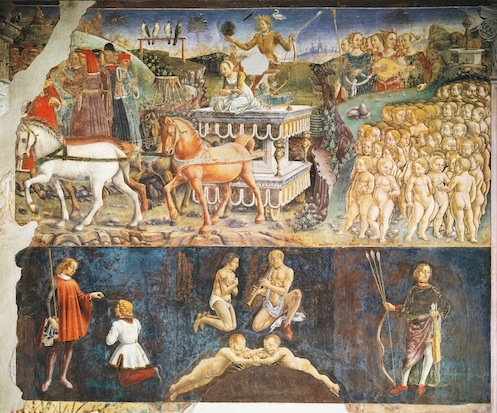Pity the poor art historian writing a survey of painters from Giotto to, say, Poussin. In order to produce a history that is as gender-balanced as possible it is absolutely necessary to include every woman painter ever heard of, some perfectly worthy of their place, some less so. How the art historian might envy the novelist who at the stroke of a pen can change the sex of a little-known 15th-century painter — Francesco del Cossa, say — from male to female. Make the painter in question a woman disguised as a man, make her story the product of a teenager’s imagination and the trope is not only complete but irresistible.
Such is half of the bare skeleton of Ali Smith’s brilliant novel, How to be Both. But which half? In characteristic Ali Smith style, the text is a tightly constructed artefact, in this case consisting of two parts, dovetailing two stories either of which, depending at random on the copy the reader happens to have bought, may precede the other. One version opens with an extraordinary renaissance — Francescho thundering breathlessly up from the grave:
Ho this is a mighty twisting thing fast as a
fish being pulled by its mouth on a hook
if a fish could be fished through a
6 foot thick wall made of bricks or an
arrow if an arrow could fly in a leisurely
curl like the coil of a snail or a
star with a tail if the star was shot
upwards past maggots and worms and
the bones and the rockwork…..
The painter finds himself/herself the ghostly familiar of a 16-year-old girl, invisibly yoked and involuntary witness to a 21st-century life, some of which — iPads, photographs — he more or less decodes, though quite what is going on, and why, elude both him and the reader. Interspersed with this modern life are recollections from Francescho’s own story — vivid snatches of loss and gain, childhood and friendship, love, learning, painting.
Exactly half way through, the novel starts again at chapter one. If you have read Francescho’s tale first, then next comes the pre-story told from the point of view of the teenager. Georgia — George as she is inevitably and androgynously known — is dealing as best she can with the death of her mother shortly after their visit to Ferrara to see the frescoes by Francesco del Cossa in the Palazzo Schifanoia. George’s world is conjured up with as much brio as Francescho’s and with resonances that echo across the five centuries which divide them. George herself is a sparky attractive creation, like Francescho a mass of contradictions, of ‘boths’ — vulnerable and confident, secretive and disarmingly honest, affectionate and wary of commitment, a teenager with a conscience, a latinist, a pedant about grammar.
‘Mystery,’ George is told, originally meant something not to be disclosed. ‘But now we live in a time and in a culture when mystery tends to mean something more answerable, it means a crime novel, a thriller…. where we’ll probably find out — and where the whole point of reading it … will be that we will find out — what happened.’
How to be Both turns its back on any such reductive understanding of the word mystery, but whichever way you have read it — whichever part comes first — it is a book that will send you back to the beginning in search of the wider pattern and will end with a teasing puzzle. This warm, funny, subtle, layered, intelligent book deserves to be read at least one-and-a-half times and I’d be surprised if it doesn’t send you scurrying at least to Google Images and perhaps to Ferrara itself.
Available from the Spectator Bookshop, £14.49. Tel: 08430 600033






Comments